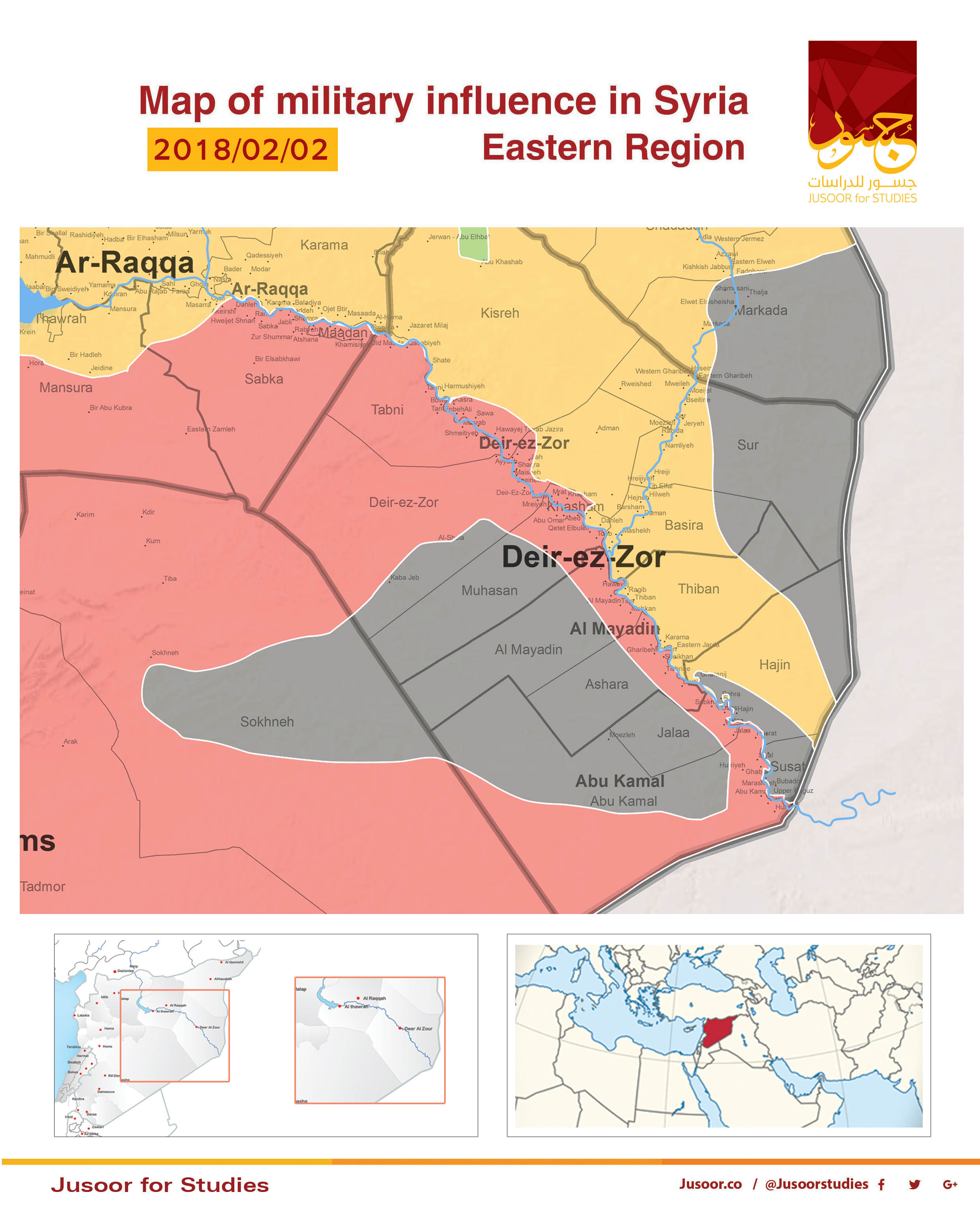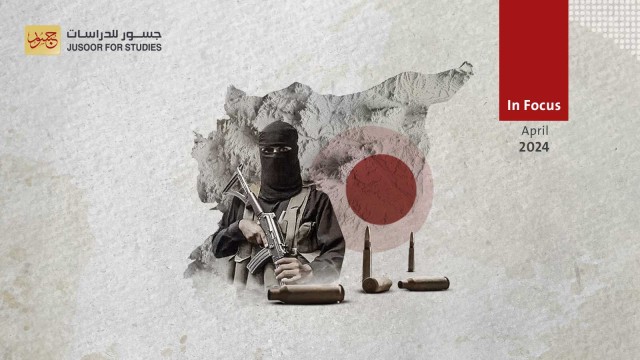Map of military influence in Syria 02-02-2018
Jusoor for Studies Center issued the map of military influence in Syria of January 2018, as it shows a constant change in the total control percentage of different forces. ISIS and Assad’s forces have gained more zones on the account of the Syrian Democratic Forces (SDF) and the factions of the Syrian opposition.
Whereby, the Syrian regime controls 53.75 % of Syrian lands, the SDF controls 25.73 % which means 1 % decrease of the total percentage of the military influence, ISIS controls 8.5 % of areas in Syria, and the Syrian opposition’s percentage of controlled areas has reduced to 11.96 %.
On January 20, 2018, Turkey started a military operation against Afrin Canton after deploying anti-air defenses around Darat Izza, which is adjacent to Afrin in Aleppo western countryside. While the Turkish Army continued the mobilization of its forces on the Turkish borders with Afrin Canton before the official announcement of the Olive Branch operation, where 19 villages and 7 strategic mountains have been seized by the Turkish-led forces.
In January 2018, many conflicting forces have almost abandoned the de-escalation zone agreement in different areas. However, the guarantor states did not issue any statement about the collapse of the agreement and Turkey has only talked about the considerable violations by Assad’s forces.
Assad’s forces and their loyalists controlled most of the zone east of Al Hijaz Railway including Abu al-Duhur Airbase and the FSA factions failed to stop this large military advancement.
While the Olive Branch operation took place in January 2018 against the Kurdish militias including the PKK in Afrin enclave.
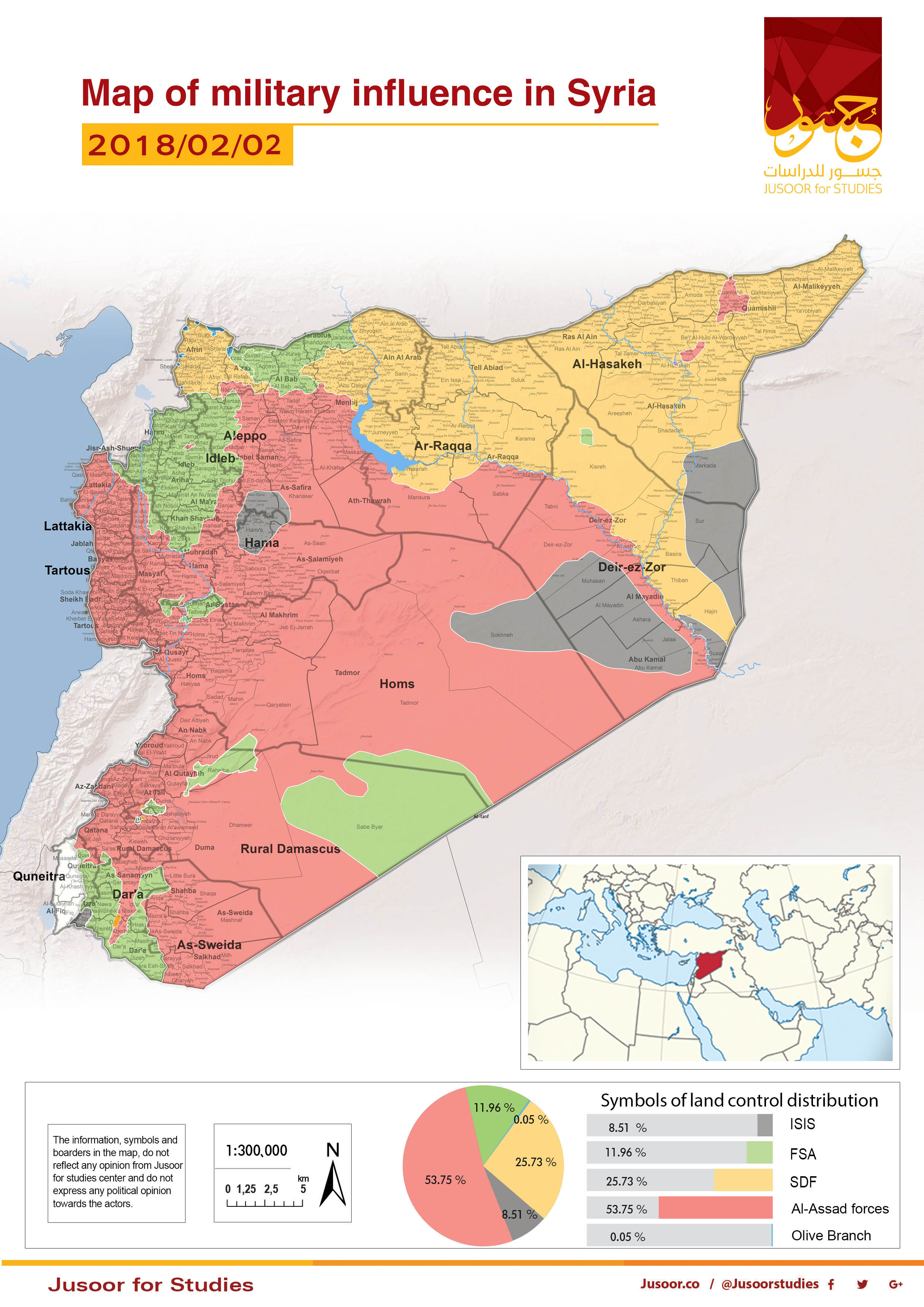
North of Syrian – Afrin Canton:
On January 20, 2018, Turkey launched a military operation against the Kurdish militias that have an affiliation with the SDF in Afrin Canton northwest of Aleppo.
The Turkish military operation entitled “Zeytin Dali” or “the Olive Branch” and the Syrian National Army (includes about 20 military armed factions) alongside the Turkish Armed Forces (TAF) and the Turkish Maroon Berets forces take part in this military operation.
The Olive Branch operation focuses on the military advancement from different axes towards Afrin city such as Sharran, Bulbul, Rajo, Al-Sheikh Hadid, and Jindairis, where the Turkish-led forces have made an extensive progress along the border strip, while 20 villages including Bulbul courthouse and 7 strategic mountains are now controlled by the Turkish-led forces.
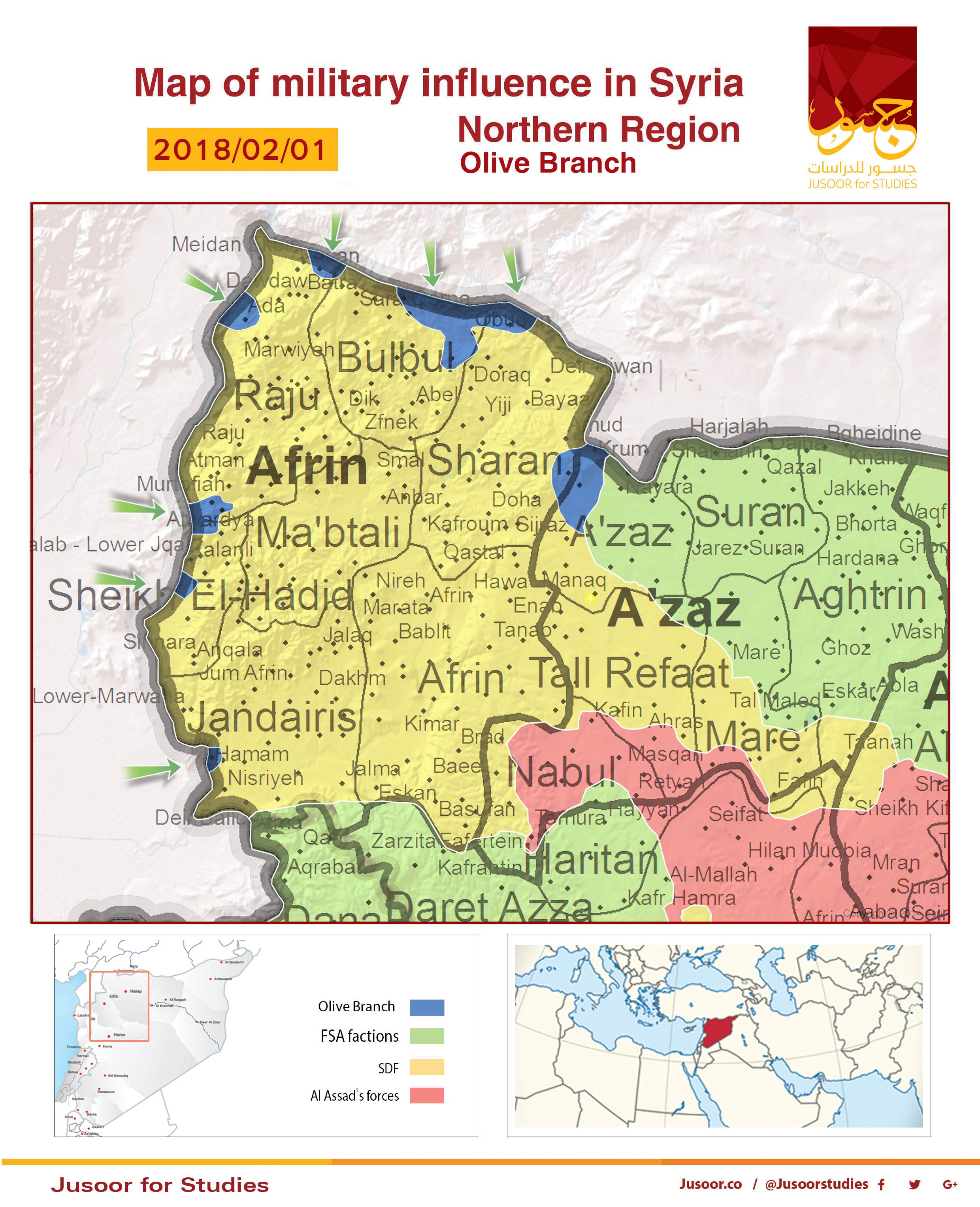
North of Syria – the zone of Al Hijaz Railway:
On January 20, 2018, Assad’s forces and their loyalists have fully controlled Abu al-Duhur Airbase in Idlib southern countryside in addition to taking over most of the areas east of Al Hijaz Railway between Aleppo, Hama, and Idlib countryside on the account of the FSA factions. Also, ISIS is being under siege in an enclave of 1100 KM2 by Assad’s forces.
The significance of controlling Abu al-Duhur Airbase is related to the fact that it considered the second large military airbase in Syria after Taftanaz Airbase north of Syria. Furthermore, Abu al-Duhur Airbase is located between three provinces which are Aleppo, Hama, and Idlib and has an area of 16 KM2, where it is considered as an entrance to Al Badia from the east and controlling such airbase can enhance the security of the Syrian regime’s presence in Aleppo and Hama provinces alongside being a focal point for starting military action towards Saraqeb city. Jusoor for Studies center has highlighted the importance of Abu al-Duhur Airbase for Iran in one of its studies, as it can become a major military base for Iran instead of the Azzan base.
Assad’s forces backed by foreign militias were able to expand west of Al Hijaz Railway through controlling many villages, which forced the FSA factions to launch two military operations entitled “Rad Al Toghyan” and “Ina Allah Ala Nasrihem Laqadir” on January 11, 2018, where the military operations focused on the areas west of Al Hijaz railway and many villages and hills were recaptured, but the battles have stopped for unknown reasons.
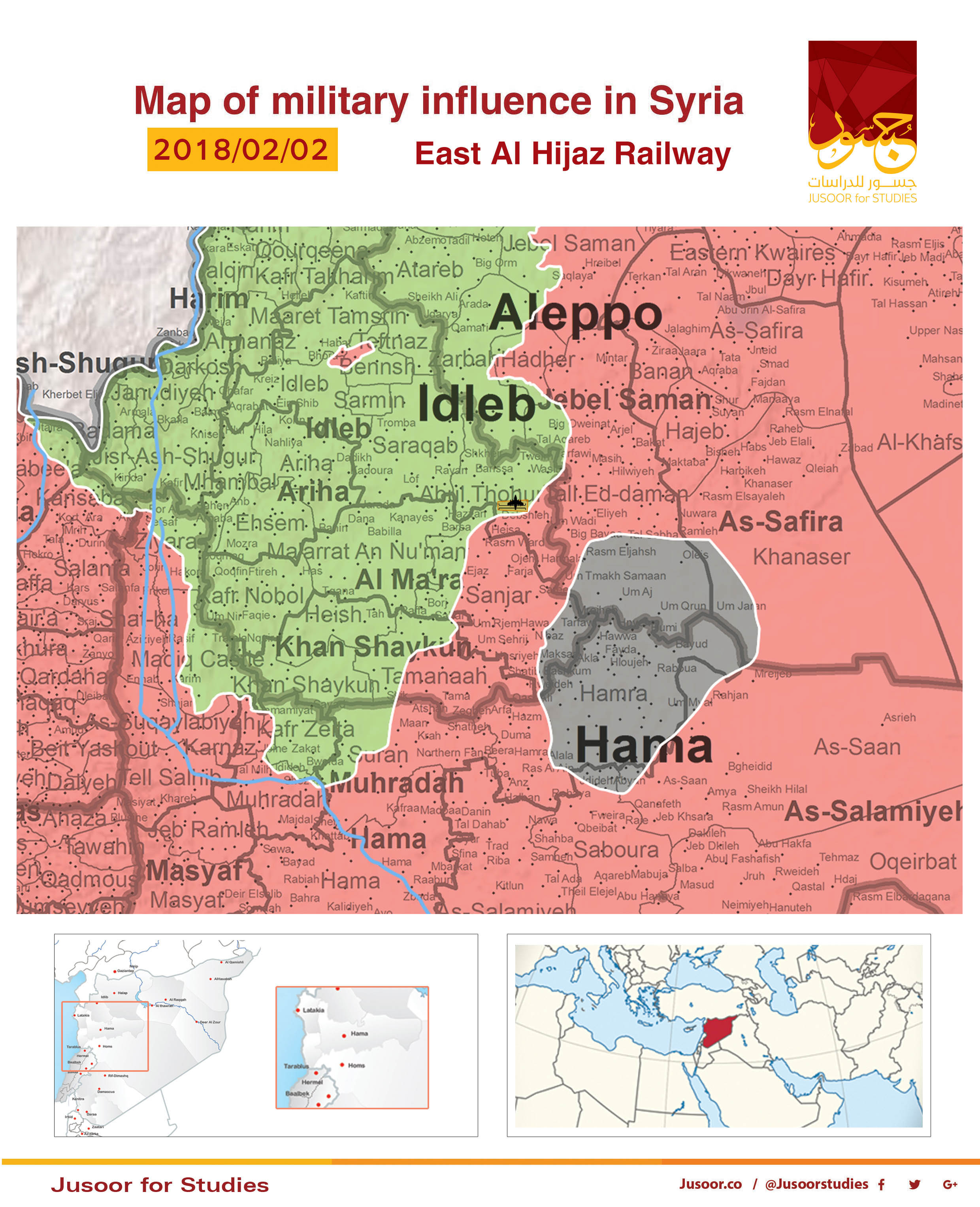
The Eastern Region:
No changes have taken place. Whilst, there were intensive attempts to control Gharanij village from the SDF in January 2018 in order to break the siege on ISIS’ combatants.
